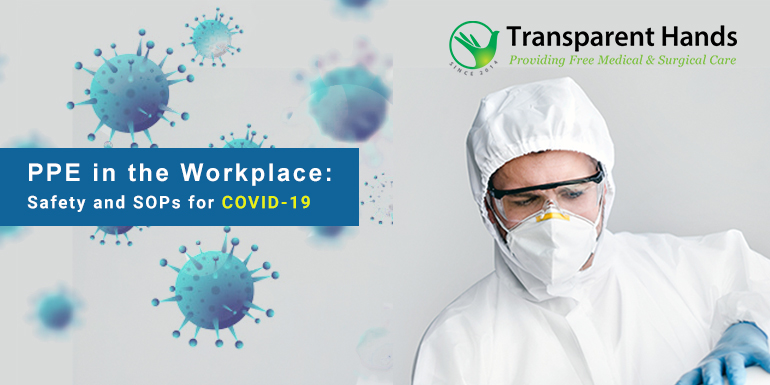PPE in the Workplace: Safety and SOPs for COVID-19

Introduction
The COVID-19 pandemic has introduced us with many terms that were only familiar to healthcare professionals at best. One such term is PPE that stands for personal protective equipment. The nature of PPE varies by the nature of work. In this discussion, we are going to talk about PPE in the healthcare sector. The novel coronavirus pandemic has highlighted the significance of the question of why is PPE important once more. So, without further ado, lets immerse ourselves in a discussion that illuminates the significance of PPE in the workplace and discusses safety and SOPs set with regards to the COVID-19 pandemic.
Why is PPE important?
We feel like that after watching hours and hours of long news reports about PPEs, you can answer this question all by yourself. But anyhow, let us outline the importance of PPE once more. Since the coronavirus poses itself as a hazard that has very easy routes of adherence and entrance into the human body, the healthcare professionals need to take care of themselves while treating COVID infected patients. Without the proper gear, one cannot expect a healthcare professional to take care of COVID patients without exposing themselves to the virus. Hence, medical PPE is essential while tackling and treating COVID-19 patients.
What is included in the PPE list?
A facemask is the basic requirement of any healthcare professional dealing with COVID-19. But there is much more to PPEs than a facemask. Typically, to deal with an infectious and contagious disease, a healthcare professional is going to need a lot more than masks. Gloves, gowns, respirators, face shields, goggles are some of the items that serve as personal protective equipment examples. This sort of gear PPE in the workplace is critical and by the workplace, we mean a hospital in this scenario.
Types of personal protective equipment
Now that we know what PPE means and what sort of protective equipment falls in this category, let us talk about the categorization of PPE. It is the same aforementioned items, but for a better understanding, these have been classified into different types of personal protective equipment. These types include the following:
1- Respiratory PPE.
2- Eye PPE that includes shields and goggles.
3- Ear PPE that can include earplugs.
4- Hand PPE that includes gloves.
5- Foot PPE that includes protective shoes.
6- Overalls and gowns.
PPE: Safety and SOPs for COVID-19
The COVID-19 pandemic has led to a serious debate about who needs PPE the most? For us, the answer is really simple. Doctors and nurses need PPE more than anyone, as they are fighting the war at the frontline. However, there is no reason why personal protective equipment in the hospital must not be available to other workers as well. For example, workers who are involved in cleaning tasks in a hospital must also be provided with adequate personal protective equipment. This approach minimizes the risk of viral infections spreading through healthcare safety.
There have been certain SOPs established for using medical PPE as well. There is only a limited number of times for which you can use a respirator mask like N-95 for example. After that, it must be discarded and a new mask must be worn. Similarly, special care must be taken while putting on and taking off overalls. The WHO has been extremely efficient in coming with SOPs that must be followed with regards to PPE during the COVID-19 pandemic. s
Personal protective equipment in hospital: The COVID crisis
Well, despite stating the ideal SOPs, compromises have to be made as these are testing times. While the most ideal thing to do would be to maintain an inventory of personal protective equipment in a hospital, that doesn’t seem to be happening. The unprecedented demand for PPE means that there is a global shortage of even the basic items on a PPE list like respirators. Hence, certain SOPs have to be abolished to continue the treatment of sick patients. All in all, this has been a crisis, a chaotic situation, which stresses better planning in the future.
Conclusion
We have observed a shortage of PPEs and ventilators, whether it is the first world or third world countries, that makes no difference. There is an urgent need to speed up the manufacturing process so that the PPE in the workplace demands of healthcare professionals can be met adequately and no doctor or nurse has to face the threat of COVID anymore!










Leave Your Comments